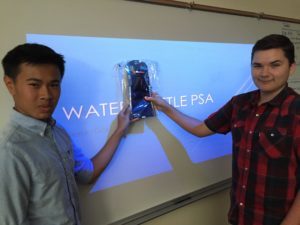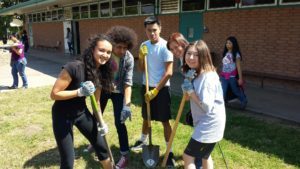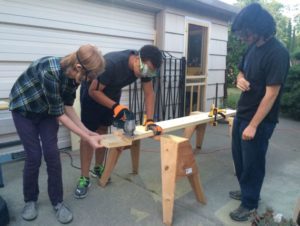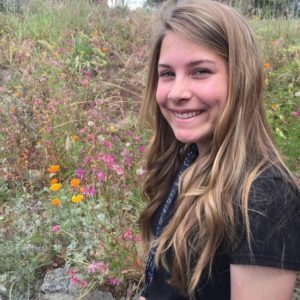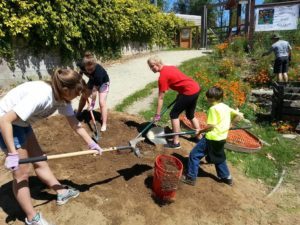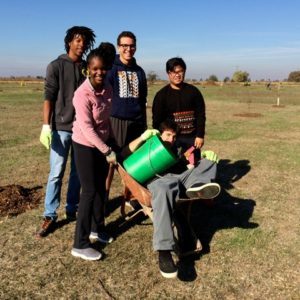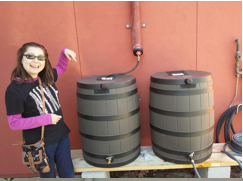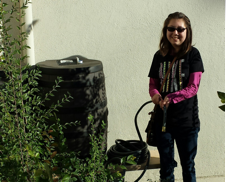2015 Sacramento, California, USA
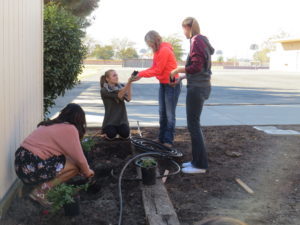
Colusa High School Students Gabriel Garcia and Jennifer Pulido identified an area of their campus that was in need of improvement. It was a large area of bare ground that, in the event of a storm, would become a source of excess sediment due to surface runoff from the school. It was also a highly visible spot that would make an excellent gathering place for students during lunch or outdoor learning opportunities.
Their idea was to implement a landscaping project in this area with native, drought tolerant species. Their project would demonstrate the use of native species that require less watering, and do not need fertilizers and pesticides, thus addressing issues of water quantity and quality.
They hoped to beautify their campus, reduce sediment delivery, and create habitat, but also to inspire other members of their community to landscape with water conservation in mind as well.
After Gabriel and Jennifer took 6th place in the Caring for Our Watersheds Final Competition, they wanted to make their idea come to life. With the help of the students of their school’s Environmental Science Academy, their project was accomplished. With the help of Caring for Our Watersheds project funds, high traffic areas of the site were covered with fabric and gravel, landscape beds were built around the perimeter, drip irrigation installed, and native species planted.
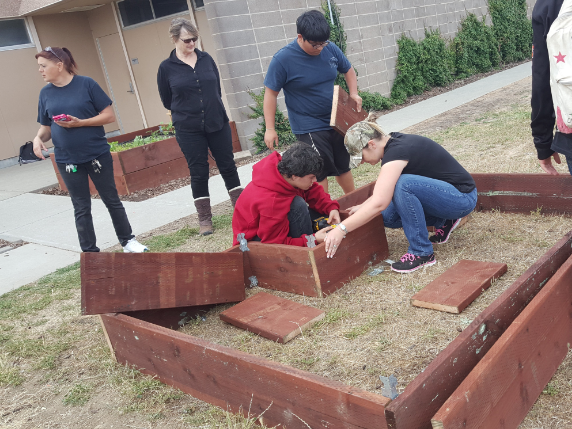
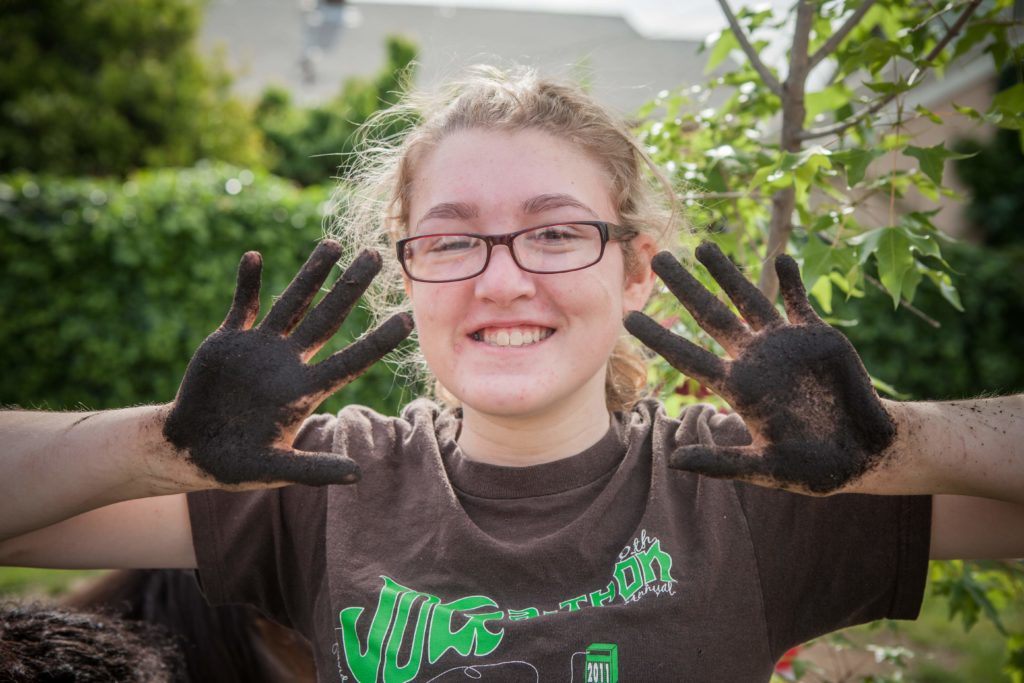 new tree in the area, protecting it with a planter wall, and reseeding the remaining bare areas. The plantings would stabilize the bare soil and reduce sediment delivery to nearby waterways. Of course, the tree planting would also provide shade to the kids playing in the yard at recess and outdoor learning activities. Sandra organized special teams of kindergartners and their 6th grade “buddies” to help with site preparation and planting. After the planting, she organized “work parties” with school parents to build the planter wall and finish the remaining work. Nutrien project funding helped to buy supplies, soil, plants, and seeds for the project, which will benefit both the environment and the school community for generations to come.
new tree in the area, protecting it with a planter wall, and reseeding the remaining bare areas. The plantings would stabilize the bare soil and reduce sediment delivery to nearby waterways. Of course, the tree planting would also provide shade to the kids playing in the yard at recess and outdoor learning activities. Sandra organized special teams of kindergartners and their 6th grade “buddies” to help with site preparation and planting. After the planting, she organized “work parties” with school parents to build the planter wall and finish the remaining work. Nutrien project funding helped to buy supplies, soil, plants, and seeds for the project, which will benefit both the environment and the school community for generations to come.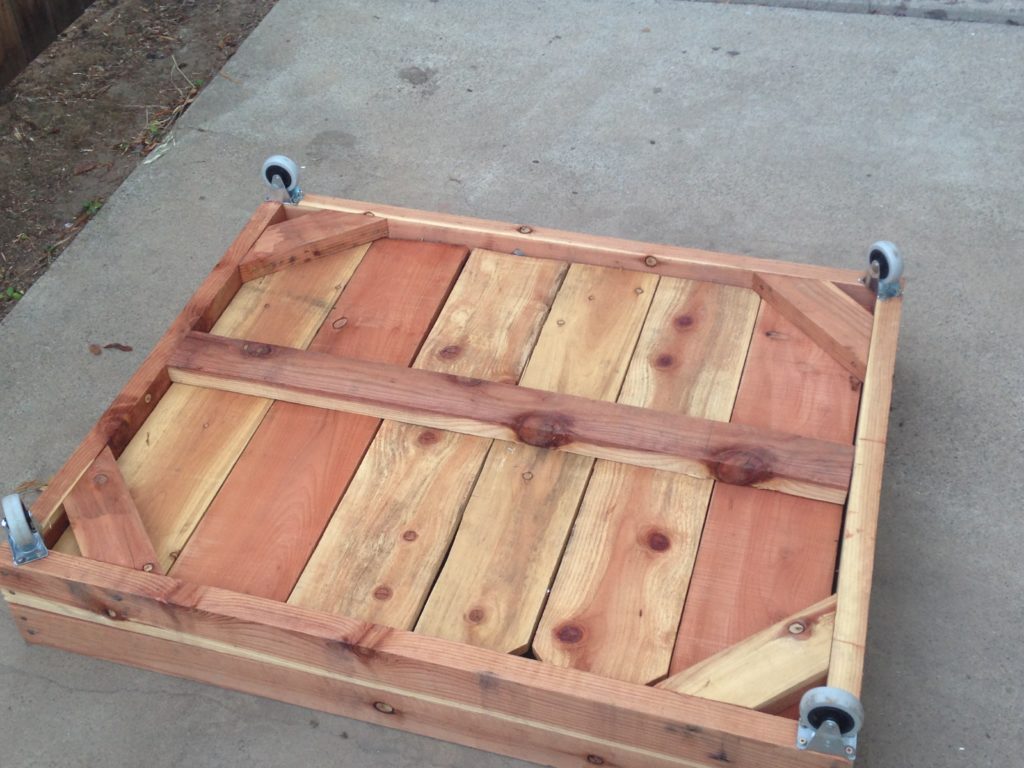
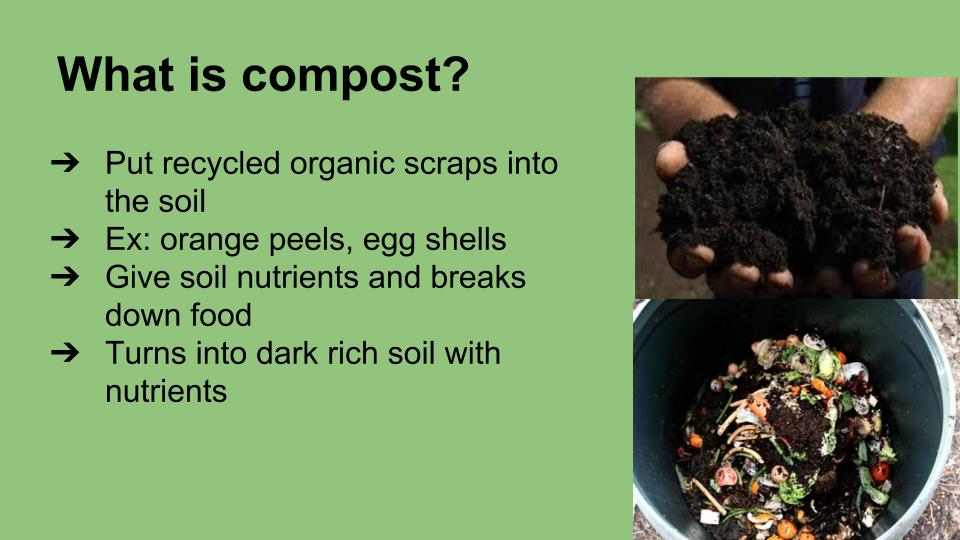 group then planned and delivered a lesson to freshman at school on the benefits of compost, utilizing their demo garden bed and preliminary results from their own experiment.
group then planned and delivered a lesson to freshman at school on the benefits of compost, utilizing their demo garden bed and preliminary results from their own experiment.
